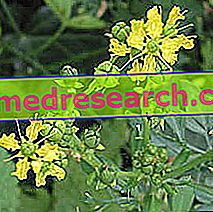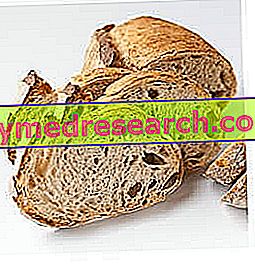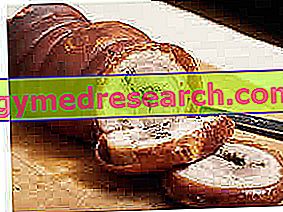What is Maple Juice
Maple juice: general information
Maple juice is synonymous with "maple syrup".

It is a sweet food derived from the sap, more precisely from the xylem, of some trees like red maple and black maple (Genus Acer ).
Typical of cold climates, these maples take advantage of the warm season to accumulate starch inside the trunk and roots. Towards the end of the winter period and with the beginning of spring, the reserve polysaccharide is then converted into simple sugars that date, through the sap, to the branches and leaves.
The discovery of maple juice is due to the indigenous peoples of North America. Only later, the European colonists optimized the collection and perfected the processing method; a further progress of the systems towards technological improvements at the end of the 1900s is due.
The harvest of maple juice is carried out - in the right period of the year - by pouring. By piercing the bark of the trunk and applying cannulas or taps, the sap is allowed to accumulate under special containers. The maple juice is then concentrated thanks to a heating process that allows the excess water to evaporate and, at the same time, some chemical-physical properties to mature.
Primarily used as a sweetening condiment, maple juice can be used with various types of products such as: drinks (tea, milk, coffee), breakfast foods (porridge, waffles, pancakes, French toast), simple bread or similar, fruit etc. Some also use it as a sweetener or flavoring for cooked recipes.
It does not belong to any of the VII fundamental food groups. As well as honey and agave syrup, maple juice is also considered a "lighter" substitute for sugar. It is however very caloric and rich in soluble glucides (mainly sucrose); however, unlike the classic white table granular, it also contains water and other nutritional factors.
Typical of the North American continent, in particular of Canada, there are various types of maple juice that differ both in their origin and in the method of processing and therefore in their organoleptic and taste characteristics. Maple juice is officially classified, according to the scales of Canada, the United States or Vermont, based on density and translucency.
To be defined as such, Canadian maple juice must be obtained exclusively from maple sap and must contain at least 66% of sugars. In the USA, however, it is sufficient that the food is PRINCIPALLY extracted from this plant; nevertheless, the states of Vermont and New York have much more restrictive definitions.
Did you know that…
The province of Québec supplies 70% of world production and contributes 90% to Canadian exports to the world, which in 2016 reached 487 million US dollars.
In America, on the other hand, the state of Vermont produces large quantities of maple juice, with only 6% of the global.
Nutritional Properties Maple Juice
Nutritional characteristics of maple juice
The basic ingredient of maple juice is xylem, a type of sap extracted from the so-called "sugar maple" (red maple) or related species (such as black maple).
The maple juice consists mainly of sucrose and water, but there are also small amounts of monosaccharides (glucose and fructose) released by hydrolysis during the boiling process.
The maple juice provides 260 kcal per 100 g of product, consisting of 32% water and 67% carbohydrates (of which 90% is sucrose). Proteins and fats are present in non-relevant concentrations. The concentration of free amino acids can change based on the state of the sap.
Despite being considered by many to be more nutritious than sugar, maple juice is a food that is low in minerals and vitamins. Only moderate levels of manganese, riboflavin (vitamin B2), zinc and calcium are appreciated.
Maple juice does not contain cholesterol or fiber. It is also free of molecules frequently responsible for food intolerance such as gluten, lactose and histamine. Maple juice allergy should be quite rare.

Maple syrup | ||
Nutritional values per 100 g | Quantity' | % * |
| Power | 260.0 kcal | |
Total carbohydrates | 67 g | |
Starch | 6.6 g | |
| Simple sugars | 60.4 g | |
| fibers | - g | |
| Grassi | 0.06 g | |
| Saturated | - g | |
| Monounsaturated | - g | |
| polyunsaturated | - g | |
| Protein | 0.04 g | |
| water | 32.4 g | |
| Vitamins | ||
| Vitamin A equivalent | -μg | |
| Beta-Carotene | -μg | |
| Lutein Zexanthin | -μg | |
| Vitamin A | -iu | |
| Thiamine or vit B1 | 0.066 mg | 6% |
| Riboflavin or vit B2 | 1.27 mg | 106% |
| Niacin or vit PP or vit B3 | 0.081 mg | 1% |
| Pantothenic acid or vit B5 | 0.036 mg | 1% |
| Pyridoxine or vit B6 | 0.002 mg | 0% |
| folate | 0, 0μg | 0% |
| Choline | 1.6 mg | 0% |
| C vitamin | 0.0 mg | 0% |
| Vitamin D | -μg | 0% |
| Minerals | ||
| Football | 102.0 mg | 10% |
| Iron | 0.11 mg | 1% |
Magnesium | 21.0 mg | 6% |
| Manganese | 2.908 mg | 138% |
| Phosphorus | 2.0 mg | 0% |
| Potassium | 212.0 mg | 5% |
| Sodium | 12.0 mg | 1% |
| Zinc | 1.47 mg | 15% |
| fluoride | -μg | 0% |
* The percentages (approximate) refer to the recommended US ration (US) for the adult population
Aromatic factors of maple juice
Maple juice contains a wide variety of volatile and aromatic organic compounds, including vanillin, hydroxybutanone and propionaldehyde. It is not yet known what factors are responsible for the flavor and aroma characteristic of maple juice; it is however conceivable that the furanone of the maple, the furanone of the strawberry and the maltol play a fundamental role. Recently new compounds have been identified, one of which is quebecolo; this phenol, absent in the raw juice, is formed only during the boiling of the xylem.
For more information on the organoleptic characteristics of the food, see the article "Maple Syrup".
Kitchen
Maple juice in the kitchen
Maple syrups and various artificial imitations are traditionally used, especially in North America, as a sweet condiment for pancakes, waffles and French toasts.
Some use them to flavor a wide variety of foods and beverages, including: pancakes, ice cream, porridge, fresh fruit, salted sausages, muesli, apple sauce (or apple puree), bean stew, candied sweet potatoes, pumpkin winter, cakes, pies, simple or similar bread, tea, coffee and toddies (warm Scottish blend of whiskey, water and honey or other sweetener).
Maple juice can also be used as a honey substitute in mead.
Types
Types of maple juice
In the past, every state or province in North America had its own classification method for various types of maple syrup. Today, however, thanks to a long adaptation project, Canada and the United States have unified the laws relating to the classification of maple juice as recommended by the "International Maple Syrup Institute" (IMSI).
Unified classification of maple juice
Although Quebec, Ontario and Ohio do not recognize this classification, the "Canadian Food Inspection Agency" (December 31, 2014) and the "Agricultural Marketing Service" (March 2, 2015) amended the following:
- Grade A (free of unpleasant scents, turbidity and sediments, with uniform color)
- Golden color and delicate flavor - transmittance (at a wavelength of 560 nm through a 10 mm sample) of 75%
- Amber color and rich taste - transmittance equal to 50-74.9%
- Dark color and robust taste - transmittance of 25- 49.9%
- Very dark color and intense taste - transmittance below 25%.
- Grade Processing (does not meet the requirements of Grade A maple juice; must be sold in containers equal to or greater than 5 gallons)
- Poor (does not meet the requirements of Grade Processing maple syrup).
Note : The syrups collected at the beginning of the season have a lighter color
Golden and amber colored maple juice generally have a more delicate flavor than dark ones and are suitable for use as a condiment. The dark ones, on the other hand, are used above all for cooking.



